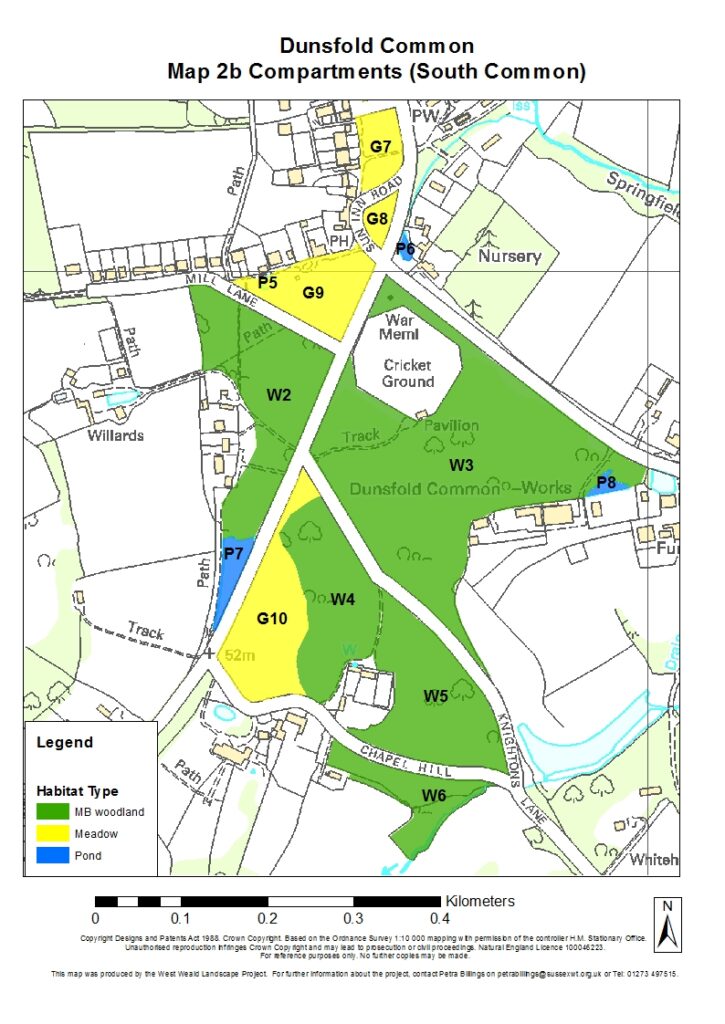Dunsfold Common is a fine example of a rural Surrey village common, of importance not just in a landscape context but also for its recreational value and biodiversity.
In recent years however the Common has suffered from a lack of woodland management and some issues with the management of the ponds and grasslands. As a result most of the woodland on the common is even-aged and overcrowded with little structural diversity.
The lack of light reaching the woodland floor is causing a decline in the ground flora, compounded by competition from non-native and invasive species such as Himalayan balsam. Over the past twenty years, the woodland has encroached onto the grassland such that their proportions on the common have changed from approximately 45% grassland and 45% woodland to 31% grassland and 65% woodland. The remainder of the land area can be accounted for by the ponds, some of which have started to dry out, notably the large shallow pond P4 at Gratton Corner.
The grasslands are cut annually in late summer, some areas twice a year, and the cuttings removed. This regime provides a fair diversity of wildflowers and associated invertebrates but around the fringes of the common which are managed by local residents without regulation, there are problems. These include the deposition of garden refuse, the introduction of non-native, sometimes invasive species such as the Spanish bluebell, and even potentially the acquisition of managerial rights or ownership.
There is a good range of ponds, from those which are mostly open to others which are drying out. They have been well-managed and there is a programme of desilting and clearance, as funding permits. However, like the meadows, some ponds are suffering from invasion by ‘garden escapes’ to the detriment of native vegetation and associated wildlife.
The vision (2020) is to implement a programme of management which meets the multiple needs of recreation, landscape and biodiversity.
While there are some fine veteran and potential veteran oaks in the woodlands, young even-aged oaks are overcrowded and suppressed. The woodlands will be opened up by thinning to increase light levels. This will encourage the woodland ground flora which in turn will provide feeding and breeding areas for the woodland butterfly and bird communities. Damaged and dangerous trees will be removed to maintain public safety.
The ponds will be managed to maintain their range of structural diversity and distinctiveness across the Common, controlling non-native species and restoring and enhancing their wildlife communities. The grasslands will be managed both as a resource for community events and as wildflower meadows, a priority habitat for conservation. Woodland
encroachment on to the grasslands will be controlled.
Community education and engagement is needed to tackle issues such as erosion from car parking, vandalism, dog fouling, the dumping of garden waste and the introduction of non-native species.


